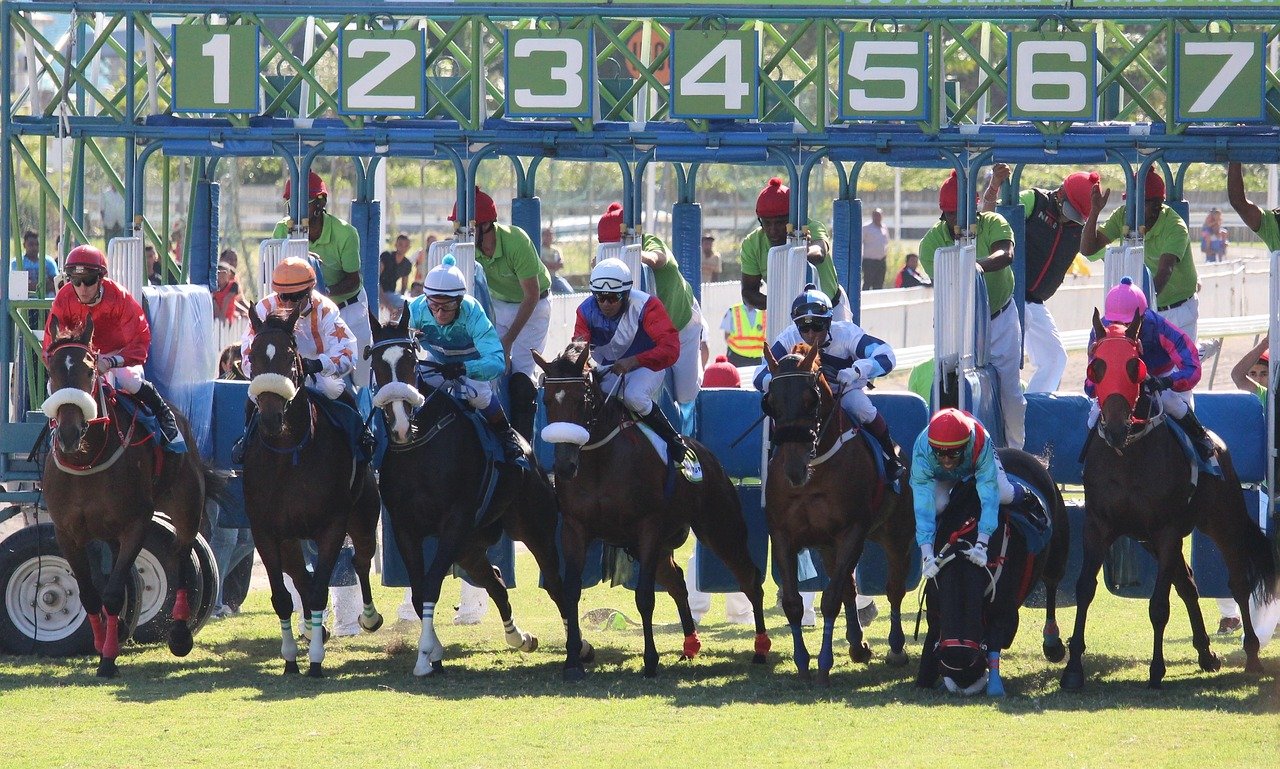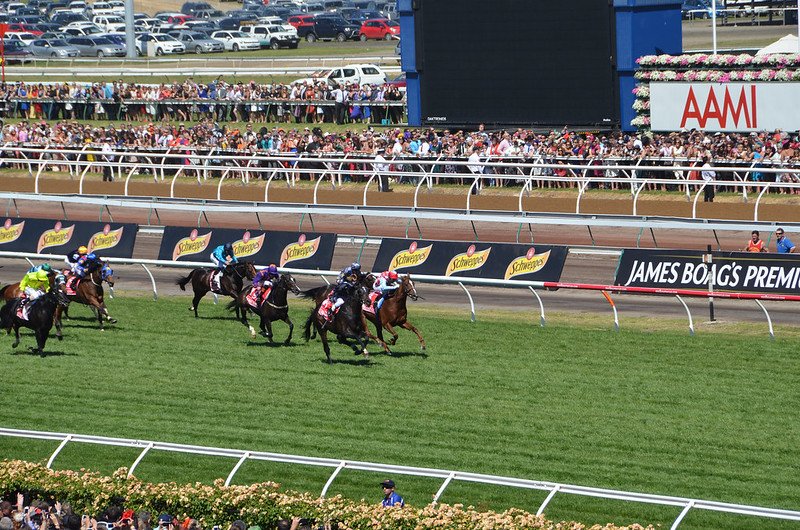The Melbourne Cup is arguably one of the cruellest and most violent events on Australia’s sporting calendar. Horses are fragile animals, and racing them is likely to result in injuries for some and even deaths for others. However, the Cup might also be one of the most lucrative sporting events in the country!
November is upon us, which means the Melbourne Cup is here! Put on your fanciest hats, place in the brightest flower you can find, and don’t forget your finest 3-piece, hipster, suit!
Let us all drink until our bodies can’t handle anymore. Ohh, and I almost forgot, do put a $100 down on the horse with the most glamorous name!
Meanwhile, let’s also watch a horse get overworked and die, or at least, be euthanized after a catastrophic injury. 6 horses – dead in 6 years. The stats speak for themselves.
In 2017, the Victorian Government saw revenues of $444.5 million from the Melbourne Cup Carnival (this includes the race itself, and all the other support events), as a whole!
Sorry to burst your bubble, but the Melbourne Cup is arguably one of the most violent and cruel events on Australia’s sporting calendar. Horses are fragile animals, and racing them is likely to result in injuries for some of them and even deaths for others. However, the Cup might also be one of the most lucrative sporting events in the country.
Before looking into the bleak reality of the nation (along with our cousins in New Zealand) stopping to watch an event with horses that have to be put down, and horses that die instantly, let’s look at the money involved…
Since 2010, around a million people have attended the Melbourne Cup. That’s a staggeringly large number, and when you consider that 83,471 people attended in 2018, these numbers are more than a single day of the 2018 Boxing Day Test and roughly 16,000 less than the 2018 AFL Grand Final. This event is massive, there is no doubt about that.
So much so that in 2017, the Victorian Government saw revenues of $444.5 million from the Melbourne Cup Carnival (this includes the race itself, and all the other support events), as a whole! On top of this, according to Racing.com, the carnival employed 20,000 staff and contractors. The economic benefit to the state of Victoria cannot be questioned.
So much so that in 2017, the Victorian Government saw revenues of $444.5 million from the Melbourne Cup Carnival (this includes the race itself, and all the other support events), as a whole! On top of this, according to Racing.com, the carnival employed 20,000 staff and contractors. The economic benefit to the state of Victoria cannot be questioned.
READ: Are the Socceroos a team of yesteryear?
Not to mention, we haven’t even discussed the betting side of the business yet! According to Nick Toscano, of the Sydney Morning Herald, ‘The Melbourne Cup is the biggest betting event on the Australian calendar, and the sheer number of bets placed in the lead-up is extraordinary.’
He added, ‘Punters with TAB placed nearly 11 million bets on Cup Day and wagered more than $90 million on the Melbourne Cup itself’. Tab Corp, which he referred to, is one of Australia’s largest gambling entertainment companies and its press release stated that it held revenues of $115 Million from the 2018 Melbourne Cup alone.

These numbers are also huge and this is by far Australia’s biggest betting event. It also does not look like it will be stopping any time soon. Even if that means a horse dying every year, several horses being whipped, and dozens of horses bleeding internally.
That’s the unfortunate and horrible reality or the other side of this economic powerhouse of an event. As I stated, 6 horses either died or had to be put down over the last 6 years of the Melbourne Cup.
Most recently, The Cliffsofmoher was euthanised after breaking his shoulder on track in 2018. Reports even stated that he did not look up to the task prior to the race, and it would have been worth leaving him out for the race.
He, however, followed Regal Monarch, Red Cadaeux, Araldo and Verema, who were euthanised in 2017, 2015, 2014 and 2013 respectively. Meanwhile Admire Rakti suffered a heart attack and died in 2014 as well.
Following the death of The Cliffsofmoher, RSPCA Australia’s spokesperson, Jane Speechley said “RSPCA Australia has long voiced its concerns about the welfare of racehorses, including the use of inhumane devices such as whips and tongue ties, as well as the risk of injury and death during races.”
Since 1890, over 800 riders have died, and at least 13 jockeys have been killed in the past 15 years. Additionally, over 100 horses died on race tracks in Australia between August 2018 and July 2019.
Yes, over whipping is common in horse racing, and it does in fact hurt. Pure adrenaline during sport can result in such outcomes and jockeys can get out of control. In fact, in true fashion, during the 2018 Melbourne Cup, star jockey, Hugh Bowman was suspended for 35-meetings, 8 of which came from over whipping. The remaining 35 were made up of 21 suspensions for being overweight and 12 for reckless riding. Yep! 13 more suspensions for being 500 grams overweight, compared to hurting his thoroughbred horse.
This only goes to show that the industry does not do enough to punish injuries, often stating that horse deaths are an unfortunate and more or less, acceptable aspect of the race. This also seeps into wider Australian horse racing, and horse deaths in the country.
In fact, since 1890, over 800 riders have died, and at least 13 jockeys have been killed in the past 15 years. Additionally, over 100 horses died on race tracks in Australia between August 2018 and July 2019. The vast majority of these deaths, according to data collated by The Coalition for the Protection of Racehorses, were due to front limb injury, while other causes also included bleeds and cardiac failure.
As brutal as it is, it’s important to note that Australian races are far safer for horses than other nations, such as the UK and the US. In the UK, the fatal injury rate is approximately 0.8 per 1,000 starts, and the USA is 1.6 per 1,000 starts.
Also, it would be naïve of me to say that carers and staff attached to these horses do not provide proper care and love for them. In fact, it is often these people who care the most for their horses, providing them with the dedication that is required to keep them in tip-top shape.
Yet, no matter how precise you are, just as is the case with any sport that does not involve animals, we as humans, can end up overlooking key issues, which may result in the death or injury for these horses.
Perhaps, it would be a completely different situation, if the narrative around the cup was not as focused on it being an opportunity to have a wild day out and if the amount of money that generated was far lower.
Another positive sign is that these problems are becoming more prevalent in both conventional and social media, for example with the hashtag #NupTotheCup trending on twitter on Race day. And similarly, an increasing number of news agencies have started covering these horse and jockey fatalities and injuries.
It may never be the case though that people across the country and around the world, view this as the brutal sport that it is, simply because there is too much money, fun and entertainment involved.



